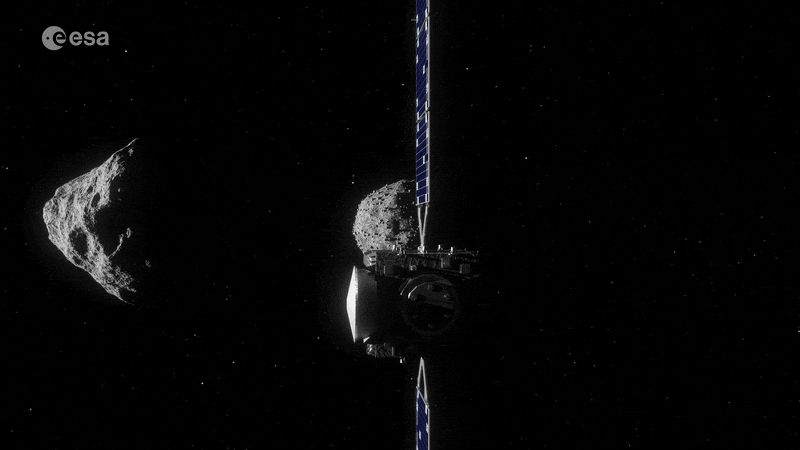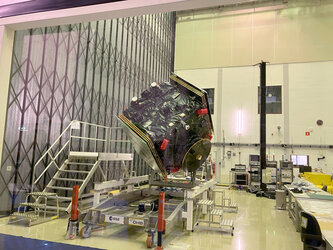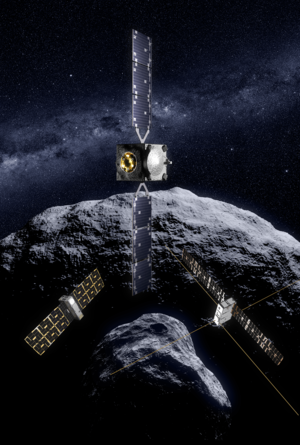
Hera mission navigation camera testing
Thank you for liking
You have already liked this page, you can only like it once!
A practical test being performed during the 2015 ESTEC Open Day of the navigation camera planned to guide ESA’s proposed Hera mission around its double-asteroid target, Didymos.
Many of the thousands of visitors to ESA’s technical heart in Noordwijk, the Netherlands on Sunday 4 October were able to see the simulation for themselves, set up by the Agency’s Guidance, Navigation and Control section.
The red robotic arm seen left held the camera and moved it smoothly through three dimensions next to a spinning model of the Didymos asteroid system, destination of the Agency’s candidate Hera mission. The experiment was performed in partnership with ESA’s Automation and Robotics section, supplying the COMAU robotic arm.
The screen in the foreground depicted the camera’s eye view as it gradually came closer to the main asteroid.
Hera is the European contribution to an international double-spacecraft mission. NASA will first perform a kinetic impact on the smaller of the two bodies, called Didymoon, then Hera will follow-up with a detailed post-impact survey that will turn this grand-scale experiment into a well-understood and repeatable planetary defence technique.
Hera, a further optimisation of ESA’s earlier Asteroid Impact Mission, is currently in Phase B1 of mission development in preparation of the Agency’s Council of Ministers at European Level in late 2019.
-
CREDIT
ESA -
LICENCE
ESA Standard Licence
-
Interior Shot
-
-
-
-
-
-

Hera approaching Didymos asteroids

View from Hera’s Asteroid Deck

Asteroid Framing Camera

Hera asteroid mission on show


